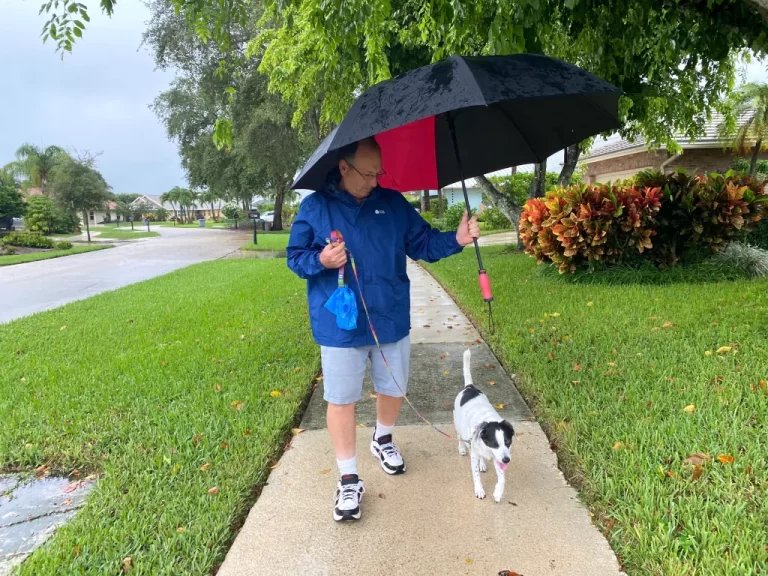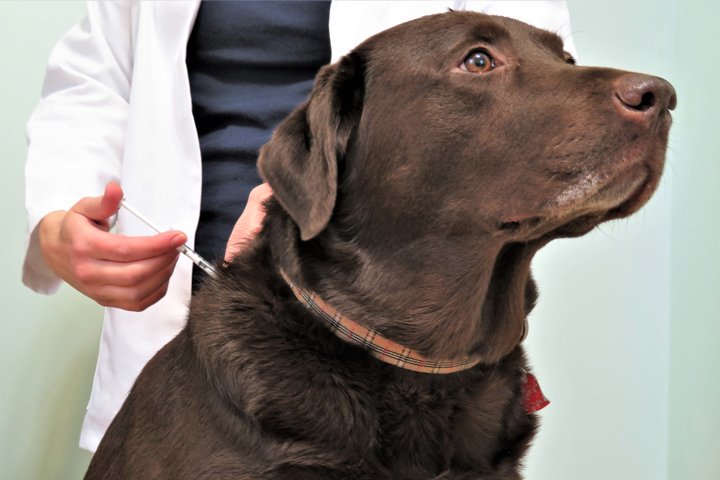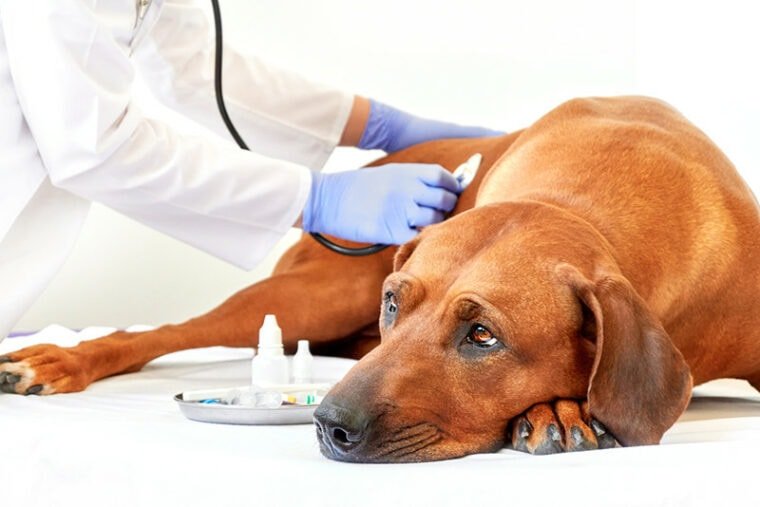Prevent Your Dog From Getting Rabies Naturally
How do I make sure my dog doesn’t get rabies?
Preventing rabies in dogs is essential for their health and safety. Rabies is a deadly viral disease that can be transmitted to humans and other animals, so taking preventive measures is crucial. Here are some steps to ensure your dog doesn’t get rabies:
- Vaccination: The most effective way to prevent rabies in dogs is through vaccination. Ensure your dog is up-to-date on their rabies vaccination. Puppies should receive their first rabies shot at around 12-16 weeks of age and then have regular boosters as recommended by your veterinarian. Keep a record of your dog’s vaccinations.
- Licensing: In many areas, having a current rabies vaccination is a requirement for dog licensing. Make sure your dog is licensed according to local regulations.
- Avoid Wild Animals: Keep your dog away from wild animals, as they can carry and transmit rabies. This includes not allowing your dog to roam freely in areas where they may encounter wildlife.
- Supervision: Supervise your dog when they are outdoors, especially if they are in an area where they may come into contact with other animals. Keep them on a leash or in a secure, enclosed area.
- Batproofing: If you live in an area with bats, take steps to “batproof” your home. Ensure there are no openings or gaps where bats could enter your house, as bats can transmit rabies.
- Report Suspicious Animals: If you encounter a wild animal that appears sick, aggressive, or unusual, do not approach it. Report it to local animal control or wildlife authorities.
- Travel Precautions: If you travel with your dog to areas with a higher risk of rabies, consult your veterinarian for specific recommendations. Some regions may have different vaccination requirements and risks.
- Post-Exposure Prophylaxis: If your dog is bitten by an animal that may be rabid, contact your veterinarian immediately. Post-exposure prophylaxis (PEP) may be recommended to prevent rabies in your dog.
- Educate Yourself: Learn about the signs of rabies in animals. Rabid animals may exhibit unusual behavior, such as aggression, excessive drooling, or disorientation.
- Responsible Ownership: As a responsible dog owner, keep your dog’s health and safety a priority. Regular veterinary check-ups and prompt care for any injuries are important.
Remember that rabies is a serious disease, and there is no cure once symptoms appear. Preventive measures, especially vaccination, are key to ensuring your dog’s protection. In addition to safeguarding your dog, rabies prevention also contributes to public health by reducing the risk of transmission to humans. If you have any concerns about rabies or your dog’s vaccination status, consult your veterinarian for guidance.
How do I make sure my dog doesn’t get rabies?
Preventing rabies in your dog involves a combination of vaccination, responsible pet ownership, and awareness of potential rabies exposure risks. Here are essential steps to ensure your dog doesn’t get rabies:
1. Vaccination:
- Keep Vaccinations Up-to-Date: Ensure that your dog receives regular rabies vaccinations as recommended by your veterinarian. In many regions, rabies vaccination is a legal requirement for dogs.
2. Responsible Pet Ownership:
- Keep Your Dog on a Leash: When outside, especially in areas where wildlife is present, keep your dog on a leash to prevent contact with potentially rabid animals.
- Supervise Outdoor Activities: Supervise your dog during outdoor activities to prevent encounters with wildlife. Avoid letting your dog roam freely in areas where rabies is prevalent.
3. Avoid Wildlife Interaction:
- Prevent Wildlife Encounters: Discourage your dog from interacting with wild animals, including raccoons, bats, foxes, and skunks. These animals can carry rabies.
4. Prompt Veterinary Care:
- Seek Immediate Veterinary Care: If your dog is bitten by an unknown or potentially rabid animal, seek immediate veterinary attention. Your veterinarian will assess the situation and may recommend post-exposure prophylaxis (PEP) if there is a risk of rabies transmission.
5. Identification:
- Use Collars and ID Tags: Ensure your dog wears a collar with identification tags containing your contact information. In case your dog gets lost, this facilitates a quick reunion.
6. Microchip Your Dog:
- Microchipping: Consider microchipping your dog for additional identification. Microchips provide a permanent and tamper-proof form of identification that can be scanned by veterinarians or animal shelters.
7. Educate Yourself:
- Learn About Local Rabies Risks: Be aware of rabies risks in your local area. Stay informed about any reported cases of rabies in wildlife or domestic animals.
8. Quarantine Stray Animals:
- Avoid Contact with Stray Animals: Do not allow your dog to interact with stray or unknown animals. Strays may carry diseases, including rabies.
9. Monitor for Unusual Behavior:
- Be Alert to Behavioral Changes: Monitor your dog for any unusual behavior, especially if there has been a potential exposure to rabies. Report any abnormal behavior to your veterinarian promptly.
10. Comply with Local Laws:
- Follow Local Regulations: Adhere to local laws and regulations regarding rabies vaccination and responsible pet ownership. Failure to comply may lead to legal consequences.
11. Stay Informed:
- Stay Informed About Rabies Outbreaks: Stay informed about any reported cases of rabies in your region. Authorities often issue alerts about rabies outbreaks.
12. Educate Others:
- Educate Family and Friends: Ensure that family members and those who interact with your dog are aware of the importance of rabies prevention and responsible pet ownership.
By taking these preventive measures, you significantly reduce the risk of your dog contracting rabies. If there is any concern about potential rabies exposure, seek immediate veterinary attention for appropriate evaluation and guidance.
How can I save my dog with rabies?
If you suspect that your dog has rabies, it is crucial to prioritize your safety and the safety of others. Rabies is a serious and potentially fatal viral disease that affects the central nervous system. Handling a dog with suspected rabies poses significant risks, as the virus can be transmitted through saliva, bites, or scratches.
Here are important steps to take if you suspect your dog has rabies:
- Do Not Approach or Handle the Dog:
- Rabies is transmitted through saliva, and the virus is most concentrated in the nervous system tissues, including the brain. Avoid approaching or attempting to handle the dog to minimize the risk of exposure.
- Isolate the Dog:
- If the dog is indoors, confine it in a secure area to prevent contact with people or other animals. If the dog is outdoors, keep a safe distance and prevent access to other pets or wildlife.
- Contact Animal Control:
- Immediately contact your local animal control or public health authorities to report the suspected rabies case. They are trained to handle situations involving rabid animals and can take appropriate actions to protect public health.
- Do Not Release the Dog:
- Do not release the dog or allow it to roam freely. This is important for preventing potential exposure to other animals or humans.
- Do Not Attempt to Treat or Euthanize the Dog Yourself:
- Handling a dog with rabies is extremely dangerous, and attempting to euthanize the dog without professional assistance poses serious risks. Leave this task to trained professionals.
- Seek Medical Attention for Yourself:
- If you have had any contact with the dog, such as bites, scratches, or exposure to saliva, seek immediate medical attention. Rabies is a medical emergency, and post-exposure prophylaxis (PEP) can prevent the onset of symptoms if administered promptly.
- Follow Public Health Guidelines:
- Cooperate with public health authorities and follow their guidelines for reporting and managing potential rabies exposures. This may include quarantine measures, monitoring for symptoms, and administration of PEP as needed.
- Discuss the Situation with Your Veterinarian:
- If your dog is exhibiting unusual behavior or symptoms, consult with your veterinarian. They can provide guidance on the next steps and may assist in coordinating with animal control and public health authorities.
Remember that rabies is a deadly disease, and it is essential to prioritize safety and follow the guidance of trained professionals. If there is any suspicion of rabies, swift action and collaboration with local authorities are critical to protect both human and animal health.
Can dogs get rabies without biting?
Rabies is primarily transmitted through the saliva of an infected animal, typically via a bite. However, it’s important to note that other modes of transmission are theoretically possible, although they are extremely rare. Rabies transmission without a bite is considered atypical and occurs in unusual circumstances. Here are some scenarios where non-bite transmission could potentially occur:
- Open Wounds or Mucous Membranes:
- If the saliva of an infected animal comes into contact with open wounds, cuts, scratches, or mucous membranes (such as the eyes, nose, or mouth) of another animal or human, there is a theoretical risk of transmission.
- Inhalation of Aerosolized Saliva:
- In very rare instances, it has been suggested that transmission may occur through inhalation of aerosolized saliva from an infected animal, particularly in confined spaces.
- Transplantation of Infected Organs or Tissues:
- Theoretically, transplantation of organs or tissues from an infected donor could transmit the rabies virus. However, stringent screening measures are in place for organ and tissue transplantation to prevent this.
It’s important to emphasize that while these modes of transmission are theoretically possible, they are extremely uncommon, and the overwhelming majority of rabies cases result from bites. Rabies is a viral disease that affects the central nervous system, and the virus is most concentrated in the saliva of infected animals.
If there is any concern about potential rabies exposure, especially through non-bite routes, it is crucial to seek immediate medical attention. Post-exposure prophylaxis (PEP) is a series of vaccinations that can effectively prevent the onset of rabies if administered promptly after potential exposure.
Prevention of rabies in animals and humans primarily involves responsible pet ownership, regular vaccination of pets, avoiding contact with wildlife, and seeking medical attention if there is any suspicion of exposure. If you suspect that an animal may have rabies, contact local animal control or public health authorities for guidance.
How do I know my dog has rabies?
Identifying rabies in dogs can be challenging because the early symptoms may resemble other illnesses or behavioral changes. Rabies is a serious and fatal viral disease that affects the central nervous system, and it is crucial to seek immediate veterinary attention if you suspect your dog may have been exposed to rabies. Here are potential signs and symptoms of rabies in dogs:
- Behavioral Changes:
- Aggression: A normally calm dog may become unusually aggressive.
- Lethargy: A lack of energy or interest in surroundings.
- Changes in Vocalization:
- Unusual Barking or Howling: Dogs with rabies may exhibit changes in their vocalization patterns, including excessive barking or howling.
- Swallowing Difficulty:
- Drooling or Foaming at the Mouth: Rabies can cause difficulty swallowing, leading to excessive drooling or foaming at the mouth.
- Altered Appetite:
- Changes in Eating Habits: Dogs may exhibit changes in appetite, either an increase or decrease in food consumption.
- Disorientation:
- Wandering or Disorientation: Rabies affects the nervous system and can cause disorientation or a lack of coordination.
- Paralysis:
- Partial or Full Paralysis: As the disease progresses, dogs may experience paralysis, particularly in the hind legs.
- Sensitivity to Stimuli:
- Hypersensitivity: An increased sensitivity to light, sound, or touch may occur.
- Hydrophobia:
- Fear of Water: Some dogs with rabies may develop hydrophobia, an intense fear of water. This can manifest as difficulty swallowing or an aversion to water.
It’s important to note that these symptoms can vary, and not all dogs with rabies will exhibit the same signs. Additionally, the progression of the disease can be rapid, and once clinical signs appear, rabies is almost universally fatal.
If you suspect your dog may have been exposed to rabies or if you observe any unusual symptoms, seek immediate veterinary attention. Rabies is a zoonotic disease, meaning it can be transmitted from animals to humans, and it poses a significant public health risk. Veterinarians are trained to assess the situation, take appropriate precautions, and, if necessary, report the case to public health authorities. If there is any doubt about rabies exposure, follow the guidance of veterinary professionals and public health officials.
Can a dog survive rabies without treatment?
No, a dog cannot survive rabies without treatment. Rabies is a fatal viral disease that affects the central nervous system. Once clinical signs of rabies appear, there is no cure, and the disease is almost universally fatal in animals, including dogs.
The only way to prevent rabies after a potential exposure is through post-exposure prophylaxis (PEP), which involves a series of rabies vaccinations. PEP must be administered promptly after potential exposure to the rabies virus, such as a bite from a suspected rabid animal.
If a dog shows symptoms of rabies, euthanasia is often recommended due to the public health risk. Rabies is zoonotic, meaning it can be transmitted from animals to humans, and it poses a serious threat to human health.
It’s important to stress that rabies is a preventable disease through routine vaccination. Keeping your dog up-to-date on rabies vaccinations is a key measure to protect both your pet and public health. If you suspect that your dog has been exposed to rabies or is showing symptoms consistent with the disease, seek immediate veterinary attention. Report any potential rabies exposure to local animal control or public health authorities for appropriate guidance and follow-up.
Can a small dog scratch cause rabies?
The risk of contracting rabies from a scratch, regardless of the size of the dog, is generally considered low but not impossible. Rabies transmission occurs through the saliva of an infected animal, and the virus is most concentrated in nervous system tissues, including the brain and spinal cord. While saliva is the primary source of rabies transmission, the virus can theoretically be present in other tissues, including the nails and claws.
It’s important to note the following:
- Rarity of Rabies Transmission through Scratches:
- Rabies transmission through scratches is considered rare. The virus is most efficiently transmitted through bites, where saliva is introduced into the bloodstream.
- Risk Factors:
- The risk of rabies transmission increases if the scratch is from an animal suspected of having rabies, such as a stray or wild animal, rather than a known, vaccinated pet.
- Immediate Care:
- If you are scratched by a dog, particularly one with unknown vaccination status or if there is a suspicion of rabies, it’s important to:
- Wash the wound thoroughly with soap and water.
- Apply an antiseptic to the wound.
- Seek prompt medical attention.
- Post-Exposure Prophylaxis (PEP):
- If there is any concern about rabies exposure, especially if the scratch is from an animal with unknown rabies status, healthcare professionals may recommend post-exposure prophylaxis (PEP). PEP involves a series of rabies vaccinations and is effective in preventing the onset of rabies if administered promptly after potential exposure.
It’s crucial to take any potential exposure to rabies seriously, and seeking immediate medical attention is essential. Rabies is a deadly disease, and post-exposure prophylaxis is the only way to prevent the onset of symptoms once exposure has occurred.
If you are uncertain about the rabies vaccination status of the dog that scratched you or if there are concerns about rabies, consult with healthcare professionals for appropriate evaluation, wound care, and guidance on the need for post-exposure prophylaxis. Additionally, report the incident to local animal control or public health authorities for further investigation and guidance.
How long will a dog with rabies live?
Rabies is a rapidly progressing and fatal viral disease. Once clinical signs of rabies appear, the disease is almost universally fatal in both animals and humans. The duration of survival after the onset of symptoms is relatively short, typically ranging from a few days to a week or two. The progression of rabies can vary, but it generally follows a pattern of stages.
Typical Stages of Rabies in Dogs:
- Prodromal Stage:
- This is an early stage where subtle behavioral changes may occur. The dog may become more anxious, agitated, or exhibit changes in appetite. This stage can last for a few days.
- Furious (Excitative) Stage:
- Dogs may become restless, irritable, and aggressive during this stage. They may exhibit uncharacteristic behavior, including biting, snapping, or attacking objects or people. This stage may last for a few days.
- Paralytic (Dumb) Stage:
- In this stage, dogs may become weak, disoriented, and eventually paralyzed. The paralysis typically starts in the hindquarters and progresses to other parts of the body. The dog may have difficulty swallowing, leading to drooling or foaming at the mouth. This stage can be brief, lasting a few days.
- Terminal Stage:
- The final stage of rabies results in respiratory failure and death. The dog may die within a week or two after the onset of symptoms.
It’s important to note that the exact duration and progression of rabies can vary, and some cases may progress more rapidly than others. However, once clinical signs appear, euthanasia is often recommended due to the public health risk. Rabies is a zoonotic disease, meaning it can be transmitted from animals to humans, and it poses a serious threat to human health.
Preventing rabies through routine vaccination of pets and avoiding contact with potentially rabid animals are key measures to protect both animal and human health. If there is any suspicion of rabies in a dog, it is crucial to seek immediate veterinary attention and report the case to local animal control or public health authorities.








